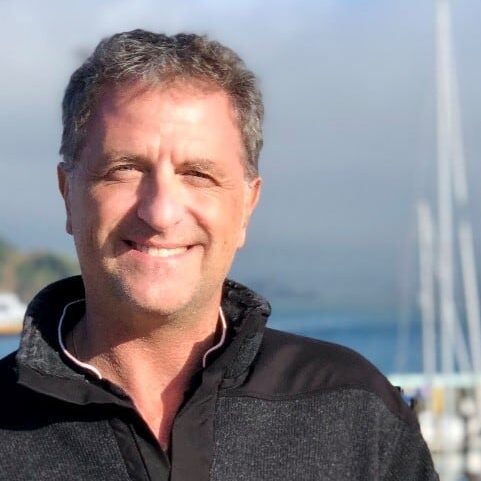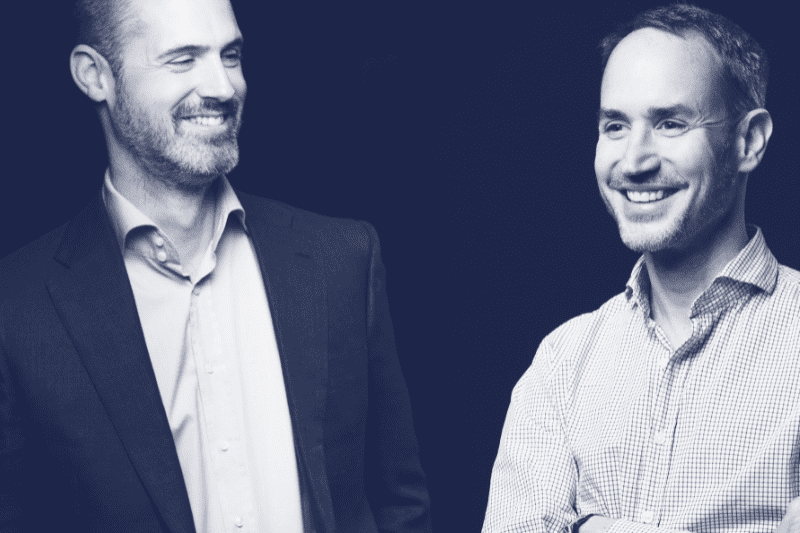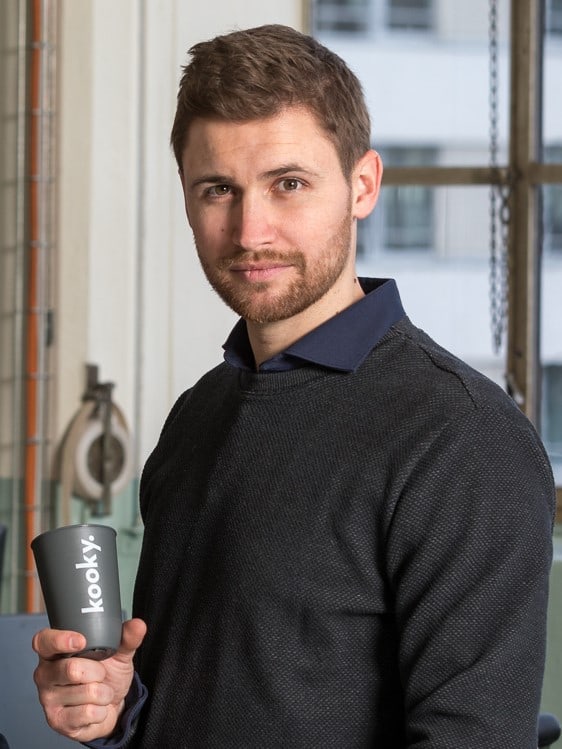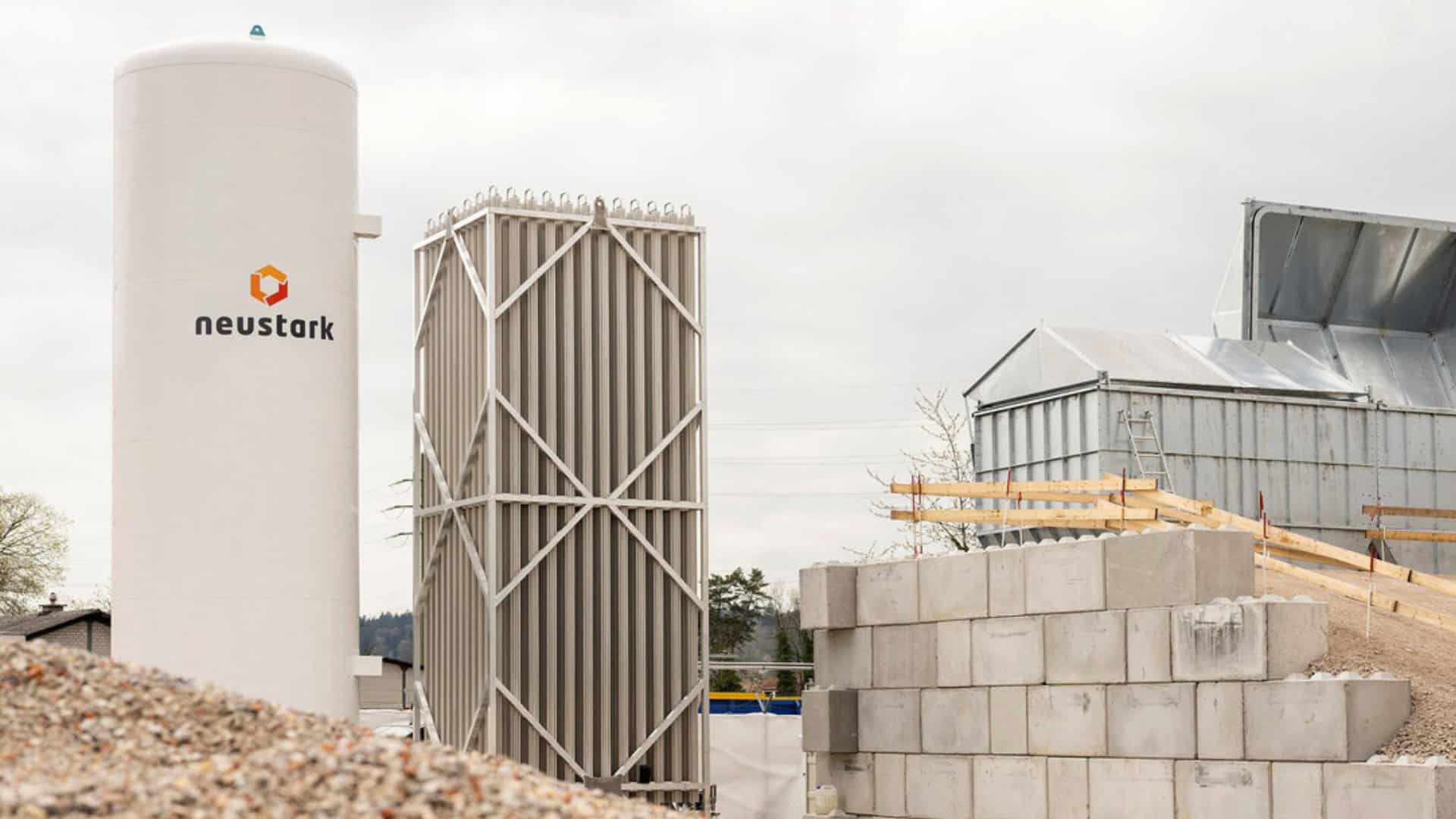MedTech startups need to gain acceptance among doctors for their technology. In this interview, Prof. Didier Hans explains how his medical imaging software startup Medimaps has managed to achieve this.

Co-founder and CEO, Medimaps Group
Didier has 30 years of experience in bone architecture and imaging techniques, authored 300+ articles, won several awards including 2019 ISCD Researcher of the year and serves on the editorial board of several scientific journals and scientific board of several medical societies. He is Head of Research and Development in the Bone and Joint Department at the Interdisciplinary Centre for Bone Diseases at Lausanne University Hospital and has held similar positions in two worldwide known bone centers, one in the US (University of California San Francisco) and the other in France (Lyon University Hospital). He also co-founded two companies: Synarc, Inc. (US) and Ascendys Sàrl (Switzerland), both of which were successfully sold. He holds a PhD in Medical Physics and an Executive MBA from HEC Geneva.
You now have over 30 years of experience in osteoporosis. What led you to this field?
My scientific background is in physics applied to the field of medicine. What led me to osteoporosis is actually a research project during my Master’s that was related to bone densitometry, a method that is often just called DXA and uses x-rays to measure bone density and diagnose osteoporosis. My report landed on the desk of one of the DXA machine manufacturers bosses and he invited me to come to the US and made my PhD in collaboration with them and Lyon University Hospital. I accepted the offer. After that, I spent three years in San Francisco in the most famous bone imaging research center in the world under the leadership of the world-famous Professor Genant, leading one of their research units. During my stay in San Francisco, we have created a clinical Imaging and biomarker research organization for pharmaceutical trials (Synarc Inc.). Before I came to Lausanne University Hospital, I spent a decade at the University of Geneva as head of research and development in osteoporosis Imaging lab which is part of the Radiology Department. In Lausanne, i have been a part of the leadership team that has created and grown the new Interdisciplinary Center of Bone Disease from almost nothing to one of the biggest sites in Switzerland.
You have also, during your career, co-founded two startups. Tell us more about them.
The first one, Synarc, provided specialized clinical trial services. Actually, Synarc was the world’s largest Central Radiology and biomarkers service dedicated exclusively to clinical trials. The startup grew to more than 600 employees when it was acquired by Bioclinica in 2014. The second one, Ascendys, did mostly small phase II clinical research for pharma trials in bone and body composition field and was helping them design the appropriate protocols to reach their goals.
What is the history of your current startup Medimaps?
We created the Medimaps Group in 2012 by combining Ascendys, a software asset from another company, D3A medical, and the precursor company of Medimaps, Med-Imaps, which I have already co-founded in 2006 already. The whole idea was to merge the appropriate know-how to bring a simple solution to a clinical gap.
“It is crucial to put the patients first.”
What are the important lessons you’ve learned from your prior startups?
In MedTech, it is crucial to put the patients first. You need to clearly identify a major clinical problem, most often complex, and come up with a solution that is simple to use. In order to get acceptance, you need a product that is disruptive in terms of patient outcome, not just a bit better, but clearly much better, and at the same time it also needs to seamlessly integrate into existing workflows. This is essential to gain medical acceptance. Doctors are under immense time pressure, today they have 30 or even just 20 minutes for a consultation that used to be 45 minutes in the past. Anything that takes time won’t be easily accepted. Medical acceptance is easily underestimated. It is like crossing the chasm or the desert for companies. You need to survive without burning too much cash. Subsequently, the second thing I’ve learned is that it’s prudent, in the medical field, not to invest too much money at the start, because it takes a long time until people will start to use your product. Everybody wants to try it themselves and doesn’t always give enough credit to what was already validated by the others in other countries. But once you’ve established a product in clinical guidelines, like we did with Medimaps, and get reimbursement, then you can put in much more money to exponentially accelerate sales as you have all the ingredients needed to grow and the well-established structure in place. If you do that too early and you are not sufficiently capitalized, the opportunity will be wasted and potentially, in the best case, make additional financial rounds necessary.
Let’s talk about the Medimaps market of people with osteoporosis. What is this medical condition?
Osteoporosis is a systemic skeletal disease that is common among elder people and leads to an increased susceptibility of fractures. Due to the aging population, the incidence of fractures is expected to triple by 2050. Already today, there are 9 million fractures every year due to osteoporosis, that’s one every 3 seconds. The most common are fractures of the vertebrae in the spine, then the hip which is leading to much severe consequences for the patients. Obviously there are many other osteoporotic fractures at other skeletal sites such at the forearm and shoulder. In many cases, when they don’t fall, for example, people don’t even think about osteoporosis. It is a silence disease until it is too late. They might feel back pain, take some painkillers and forget about it. In reality, a vertebral fracture may have already have occurred at that moment. Unfortunately, the fact of having a fracture increases the risk to have another one, which might lead to hospitalization, surgical intervention, and complications. Hip fractures, for instance, are very serious. 20% of those who are treated die within one year. To get a sense of proportion, about 1 woman in 3 over the age of 50 will have an osteoporosis fracture, and 1 man in 5. The cost of osteoporosis is immense, it is estimated to be EUR 124 billion every year worldwide, and these cases account for a high proportion of hospital bed occupancy.
“The cost of osteoporosis is immense, it is estimated to be EUR 124 billion every year worldwide.”
Why is the risk higher for women?
For everyone, your bone density increases until you reach an age of about 25, after which point you start to lose bone slowly. This bone loss accelerates for women during menopause, more specifically because of the deficiency in hormone production. We call this “normal” aging consequence primary osteoporosis. There are also quite a few medical conditions or treatments which negatively impact your bones, such as diabetes, chronic kidney disease, the use of anti-aromatase treatments commonly used to treat breast cancer or the use of glucocorticoid. This is known as secondary osteoporosis.
How is osteoporosis diagnosed?
The definition of this condition by the WHO includes two aspects: A low bone density and a degradation of bone microarchitecture. The current gold standard to diagnose osteoporosis is bone densitometry, which measures only the density of bone. This approach clearly doesn’t do the job well enough, as 50% of fractures occur in people who aren’t diagnosed as osteoporotic with this method. In order to improve the diagnosis, doctors have started to consider clinical risk factors that might give an idea about the other part, the bone microarchitecture. It is known, for example, that smoking negatively affects bone quality. But these clinical risk factors are just a indirect surrogate for measuring some aspect of bone quality. They do not provide the information about bone quality that is provided by TBS.
Before we talk about this missing measurement, let’s quickly address prevention. Is drinking milk and lifting weights a useful approach?
Prevention has several pillars and lifestyle choices matter. Weight-bearing exercises are indeed beneficial, as are muscle strengthening exercises. Another good idea is to do sports that increase your balance, such as Thai Chi, for example. If you don’t fall over, you’re less likely to fracture your bones. A healthy diet as well as the avoidance of drinking alcohol and smoking help, too. And adequate supply of calcium and Vitamin D is important because a vitamin D deficiency prevents calcium from being mineralized into bone. If osteoporosis is diagnosed, there are several drugs that decelerate bone resorption in the body as well as anabolic agents that increase bone formation. The problem is that most of the treatments take several years to achieve a substantial clinical benefit, with the exception of anabolic treatment which is faster, and around half of the patients quit after 18 months.
Why would they quit?
Osteoporosis is a silent disease. It doesn’t hurt, until you break a bone. Because they don’t feel weak or sick, patients will get fed up with taking drugs because they assume everything is fine. There is also a problem of perception. If you talk about cancer or a heart attack, people in general know that these are things to take seriously. Osteoporosis doesn’t inspire the same fear in people which is an error because people die from it or lose so much quality of life.
Let’s come back to the topic of diagnosis. Medimaps has developed a method to measure bone quality or microarchitecture, which is, as you explained, the second element of the osteoporosis definition, together with bone density. How does your approach work?
Information about bone quality that integrates well into the daily clinical workflow wasn’t accessible before. There is an alternative imaging procedure that is good for research purposes, but it is slow, expensive, and imposes additional radiation and time on the patient to be used in daily clinical practice. The idea behind Medimaps is that we can extract information about bone microarchitecture, which is three-dimensional, from a 2D-image. We basically took a technique that is used to gather information about soil from satellite image in geophysics and adapted it to medicine. This allows us to take an DXA image the doctor will take anyway and extract from it, in a matter of seconds, information about bone quality that is independent of bone density. This increases the number of patients that are diagnosed correctly in a dramatic way, up from 50% to 75%. It also empowers the doctor to choose the right treatment, because the approaches to improve density can be different from those that improve bone quality. Even for the patient, it allows them to better understand their condition, and maybe convince them to take a treatment. If you imagine the Eiffel tower but take away too many of the cross bars between its arches, you understand that you still might have a lot of mass, but that there is a need to do something about the reduced stability if you don’t want the Eiffel tower to collapse.
The TBS score that Medimaps’ software calculates is now widely accepted by researchers and clinicians as significantly improving diagnosis. It is even being integrated into national and international osteoporosis guidelines in several countries. This clinical acceptance can be a very long journey for startups in the medical field, what has been your strategy to get to this point?
The main reason is that our product allows an easy analysis and post processing of pictures that have already been taken. This gives researchers the possibility to grant studies they’ve already done in the past a second life, by adding the dimension of bone microstructure. We have very good connections to academics in different countries, to key opinion leaders and to researchers that are looking to publish new results. They can send us thousands of pictures and we’ll give them the key parameters they need in a matter of a few hours. We’re now approaching 800 peer-reviewed publications based on our measurements, many on topics where a condition impacts bone quality but not density, like in diabetes. The abundant level of evidence found in these studies led the TBS score to be included in into many different national and international guidelines in osteoporosis management. And if something is in the guidelines, people will start to use it more. But the real game-changer is that we’ve recently received a dedicated reimbursement code in the US, again, because our claims are backed by a vast body of literature and already widely spread across the country.
You are also developing several new products. Could you elaborate a bit on them and how you envision they will be used in clinics in the future to improve patient outcomes?
Because osteoporosis is a silent disease, as much as 70% of patients suffering from it are not even referred to a bone specialist, not just in cases when they have back pain, but even after a fracture. This is why we want to improve the screening with a passive opportunistic approach, based on a combination of the TBS score with artificial intelligence. This software will run on the PACS systems that store x-rays and other medical images, and it will run in the background. Say, a patient got an x-ray after she broke a bone, our system will identify her osteoporosis risk and flag her if it is likely that she has this condition. This will increase the number of patients that should get referred to a bone specialist. Another product we’re working on is aimed at orthopedists. We can offer them what they need to know to choose the right implant based on bone health status. In about 30% of patients, there is a problem of implant loosening or instability. No wonder, it’s like putting a nail in an empty wall, it won’t hold. Our software could help improve the outcomes by letting the orthopedist choose a more advanced implant or ordering a pre-treatment first should it be needed based on the TBS X-ray score.
Written by
WITH US, YOU CANCO-INVEST IN DEEP TECH STARTUPS

Verve's investor network
With annual investments of EUR 60-70 mio, we belong to the top 10% most active startup investors in Europe. We therefore get you into competitive financing rounds alongside other world-class venture capital funds.
We empower you to build your individual portfolio.
More News
28.02.2025
“We have done these things before”
Metafuels develops new technology to produce a synthetic jet fuel that paves the way for climate-neutral aviation. In our interview, CEO Saurabh Kapoor discusses the plans to scale up capacity from litres to hundreds of tonnes per day.
14.02.2025
Neustark permanently stores CO2 in concrete
neustark was founded in 2019 by Johannes Tiefenthaler and Valentin Gutknecht as an ETH Zurich spin-off. The two young entrepreneurs came together based on their shared vision of a solution for the utilization and storage of CO2.
10.02.2025
“Investments are creating the world we live in”
The Global Impact Investing Network helps institutional investors prioritize impact in their portfolios by providing tools, standards and research. Lately, it has put more emphasis on climate solutions. In our interview, Sean Gilbert explains how, in roughly 20 years, impact investing has gone from a simple idea to a movement commanding over 1.5 trillion dollars.
Startups,Innovation andVenture Capital
Sign up to receive our weekly newsletter and learn about investing in technologies that are changing the world.




